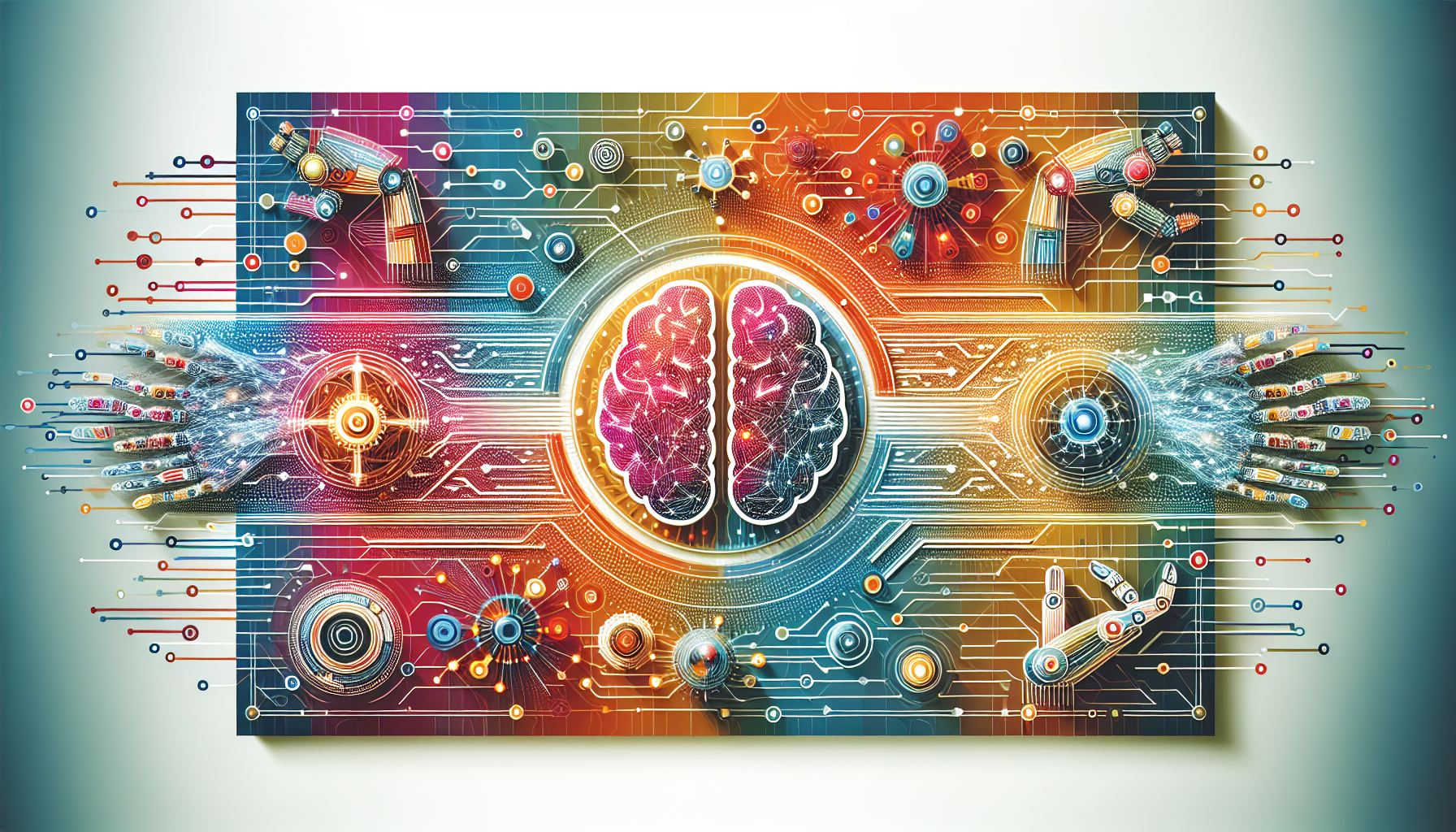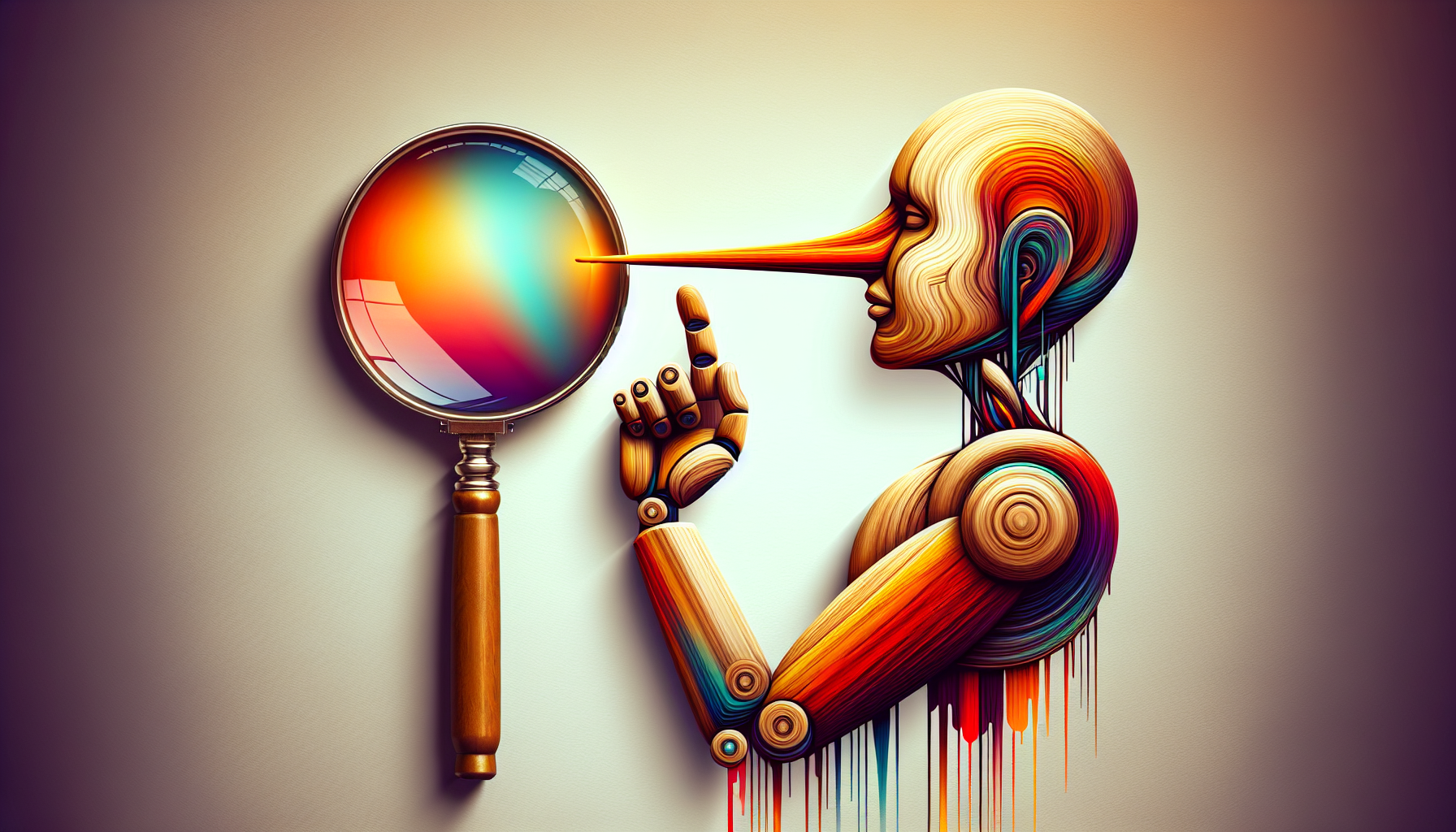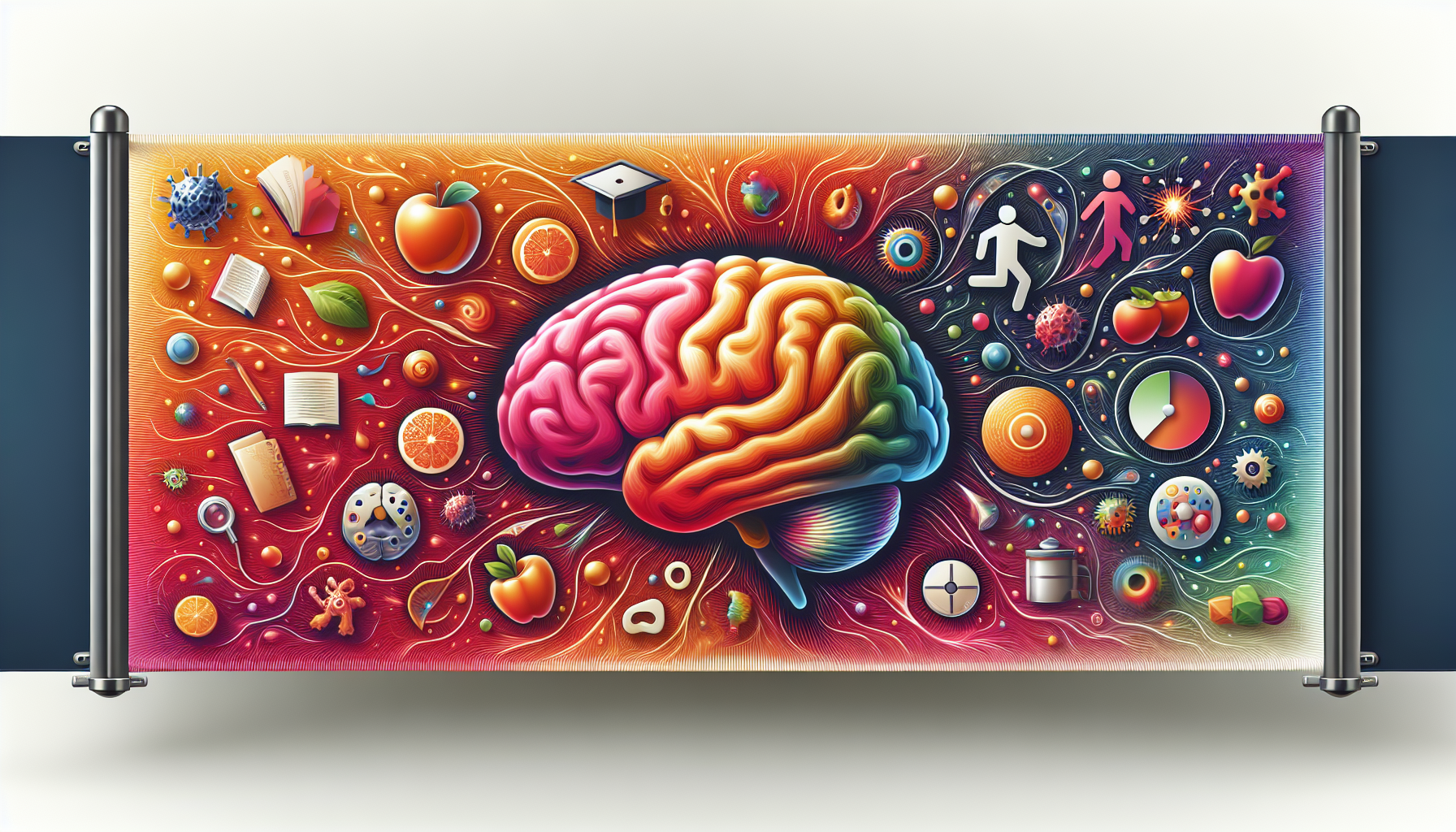On this page
Maurice Conti's TED talk discusses the dawn of the Augmented Age, where human capabilities are augmented by computational systems, robotic systems, and a digital nervous system. It delves into cognitive augmentation, the limitations of current technologies, and the potential of generative design tools. It also explores real-world applications of these tools, the importance of learning capability in AI, and AlphaGo's victory over a human Go player. The shift from logic to intuition in computers and human-robot collaboration are also examined. The content concludes with a discussion on robotic manufacturing and the need for a 'nervous system' in manufactured objects.
How does it apply to you?
The knowledge of the Augmented Age can be applied in various fields such as design, manufacturing, construction, and more. For instance, generative design tools can be used in architecture to create efficient and innovative building structures. AI and robotics can be integrated into healthcare for precision surgeries and personalized treatments. The concept of a 'nervous system' in manufactured objects can lead to the development of smart cities, where everything is interconnected and responsive.
Applied Learning to Developer Enablement
The concept of the Augmented Age can have profound implications for the field of software development. The integration of technology to enhance human cognition, physical abilities, and connectivity speaks to the potential for creating more intuitive, responsive, and intelligent software systems. This can lead to the development of software that can adapt to user needs, learn from user interactions, and provide more personalized and efficient user experiences.
Generative design tools represent a significant opportunity for software development. These tools could be used to automatically generate code based on specified goals and constraints, potentially accelerating the development process and enabling the creation of more efficient, optimized software.
The progression of AI, as outlined by the speaker, underscores the increasing importance of machine learning in software development. Machine learning algorithms can be used to improve the functionality and performance of software, enabling it to learn from user interactions and improve over time.
The concept of human-robot collaboration can also be applied to software development, with AI systems and developers working together to create more advanced, efficient, and effective software. AI systems can handle repetitive tasks and data analysis, while developers can focus on strategic decision-making and creative problem-solving.
Finally, the need for a 'nervous system' in manufactured objects suggests a need for more interconnected and responsive software systems. This could involve the development of software that enables objects to communicate with each other and with larger systems, providing real-time feedback and data that can be used to improve functionality and user experiences.
Developer Checklist
Cognitive Augmentation in Software Development
Generative Design Tools
AI Systems Development
Human-Robot Collaboration
Robotic Manufacturing
Interactive Manufactured Things
Design Considerations
Summary
The Dawn of the Augmented Age
The speaker introduces the concept of the Augmented Age, a new era in human history defined by increased augmentation of human capabilities by computational systems, robotic systems, and a digital nervous system. This age is characterized by the integration of technology in enhancing human cognition, physical abilities, and connectivity. The speaker describes the Augmented Age as the next major historical era, following the Hunter-Gatherer Age, Agricultural Age, Industrial Age, and Information Age.
Cognitive Augmentation and Current Limitations
The speaker discusses the concept of cognitive augmentation, which involves enhancing human cognition using technology. The speaker argues that humans are already augmented to some extent, citing the example of using smartphones to quickly access information. However, the speaker expresses dissatisfaction with current technologies, emphasizing that they are still passive tools that only execute explicit commands from humans.
Generative Design Tools
The speaker introduces generative design tools as the next leap in technological advancement. Unlike passive tools, generative design tools use algorithms to synthesize geometry, creating new designs based on specified goals and constraints. The speaker provides an example of a drone chassis, explaining how the computer explores all possible designs that meet the given criteria. The speaker emphasizes that such tools can generate designs that humans could not have conceived on their own.
Real-world Applications of Generative Design
The speaker presents real-world applications of generative design tools, discussing a collaboration with Airbus to design a concept plane. A generative-design AI was used to create a 3D-printed cabin partition that is stronger and lighter than the original design. The speaker highlights that while these tools can generate solutions, they are not intuitive and do not learn from past experiences.
Learning Capability in Artificial Intelligence
The speaker discusses the importance of learning capability in artificial intelligence (AI), using a dog named Maggie as an example to illustrate learning through attention, memory, and pattern recognition. The speaker then outlines the progression of AI, from a computer that could play Tic-Tac-Toe in 1952, to IBM's Deep Blue beating the world chess champion in 1997, and IBM's Watson winning at Jeopardy in 2011.
AlphaGo's Victory Over Human Go Player
AlphaGo, a product of DeepMind, recently defeated the world's best human Go player. Go is considered the most complex game in existence, with more possible moves than there are atoms in the universe. To win, AlphaGo had to develop intuition. There were instances when even its programmers could not interpret the rationale behind its moves. This demonstrates the rapid progress in artificial intelligence, as computers have evolved from playing simple games to mastering the epitome of strategic thought within a human lifetime.
Evolution from Logic to Intuition
Computers have transitioned from functioning purely on logic, akin to Star Trek's Spock, to developing intuition, more like Captain Kirk. This transition is visible in the deep-learning systems that are currently developing a form of intuition, allowing them to make quick decisions based on complex inputs, similar to a human deciding not to cross an unsafe bridge. These systems will soon be able to assess designs, predict public response to new products or songs, or assist in solving complex problems such as climate change.
Human-Robot Collaboration
In the physical realm of human augmentation, robots play a significant role. While there is fear of robots replacing humans in certain sectors, the focus is on how humans and robots can work together to achieve more. For instance, in construction, robots can perform repetitive tasks with precision, while humans provide awareness, perception, and decision making. This collaboration allows us to solve complex design problems that would be impossible for either humans or robots alone.
Robotic Manufacturing
Robotic systems can help build and manufacture things previously impossible. An example is a project in Amsterdam where an artist and an AI are designing a bridge. Once the design is completed, robots will start 3D printing the bridge in stainless steel, without human intervention, until it's finished. This exemplifies how robotic systems can augment our ability to build and create new things.
The Need for a Nervous System in Manufactured Things
Just as the human nervous system informs us about our surroundings, there is a need for a 'nervous system' in the things we manufacture. Currently, manufactured objects lack the ability to provide feedback. For instance, a car doesn't inform the city about hitting a pothole, a building doesn't report whether its occupants are comfortable, and a toy doesn't relay if it's being played with or if it's enjoyable. This suggests a need for more interconnected and responsive systems in the objects we create.
Exploring Barbie's Design and User Experience
The designers of Barbie imagined a certain lifestyle for her, but the reality could be different. For example, Barbie could be perceived as lonely. If the designers were aware of the real-world implications of their designs, including the road, the building, and Barbie herself, they could have used this knowledge to create a better experience for the user.
The Need for a Design Nervous System
Designers lack a 'nervous system' connecting them to the things they design, make and use. If they had this kind of information from the things they create in the real world, they could shift from convincing people to buy their creations to making things people actually want in the first place.
Creating a Digital Nervous System
Work is being done on digital nervous systems that connect us to the things we design. One project is with a team in Los Angeles who build unique cars. The team is working on giving a traditional race-car chassis a nervous system, capturing all of the forces it was subjected to, and then using a generative-design AI to create the ultimate car chassis.
The Future of Augmented Design
In the future, the Augmented Age, we will be augmented cognitively, physically, and perceptually. This augmentation will lead to a shift from fabricated to farmed objects, from constructed to grown, from isolated to connected, and from extraction to aggregation. This new partnership between technology, nature, and humanity will shape things in ways unseen before, leading to a world with more variety, connectedness, dynamism, complexity, adaptability, and beauty.
FAQs
What is the Augmented Age? The Augmented Age is a new era in human history defined by increased augmentation of human capabilities by computational systems, robotic systems, and a digital nervous system. This age is characterized by the integration of technology in enhancing human cognition, physical abilities, and connectivity.
What is cognitive augmentation? Cognitive augmentation involves enhancing human cognition using technology. It includes the use of technologies, like smartphones, to quickly access information.
What are generative design tools? Generative design tools are the next leap in technological advancement. These tools use algorithms to synthesize geometry, creating new designs based on specified goals and constraints.
What are some real-world applications of generative design? One real-world application of generative design is in the design of a concept plane by Airbus. A generative-design AI was used to create a 3D-printed cabin partition that is stronger and lighter than the original design.
What is the importance of learning capability in AI? Learning capability in AI is important as it allows the AI to learn through attention, memory, and pattern recognition. This progression can be seen from a computer that could play Tic-Tac-Toe in 1952, to IBM's Deep Blue beating the world chess champion in 1997, and IBM's Watson winning at Jeopardy in 2011.
What is AlphaGo and what is its significance? AlphaGo is a product of DeepMind that defeated the world's best human Go player. Go is considered the most complex game in existence. AlphaGo's victory demonstrates the rapid progress in artificial intelligence, as computers have evolved from playing simple games to mastering the epitome of strategic thought within a human lifetime.
How have computers evolved in their functioning? Computers have transitioned from functioning purely on logic to developing intuition. This transition is visible in the deep-learning systems that are currently developing a form of intuition, allowing them to make quick decisions based on complex inputs.
What is the role of robots in human augmentation? In the physical realm of human augmentation, robots play a significant role. They are used to perform repetitive tasks with precision, while humans provide awareness, perception, and decision making. This collaboration allows us to solve complex design problems.
What is an example of robotic manufacturing? An example of robotic manufacturing is a project in Amsterdam where an artist and an AI are designing a bridge. Once the design is completed, robots will start 3D printing the bridge in stainless steel, without human intervention, until it's finished.
Why is there a need for a 'nervous system' in manufactured things? Just as the human nervous system informs us about our surroundings, there is a need for a 'nervous system' in the things we manufacture. This would allow manufactured objects to provide feedback about their use and condition, making them more interconnected and responsive.
How did the designers of Barbie imagine her lifestyle? The designers of Barbie imagined a certain lifestyle for her, but the reality could be different. For example, Barbie could be perceived as lonely.
What could designers do if they were aware of the real-world implications of their designs? If the designers were aware of the real-world implications of their designs, including the road, the building, and Barbie herself, they could have used this knowledge to create a better experience for the user.
Why do designers need a 'nervous system'? Designers lack a 'nervous system' connecting them to the things they design, make and use. If they had this kind of information from the things they create in the real world, they could shift from convincing people to buy their creations to making things people actually want in the first place.
What is a digital nervous system and how can it be used in design? A digital nervous system connects us to the things we design. One project is with a team in Los Angeles who build unique cars. The team is working on giving a traditional race-car chassis a nervous system, capturing all of the forces it was subjected to, and then using a generative-design AI to create the ultimate car chassis.
What changes will the Augmented Age bring to design? In the future, the Augmented Age, we will be augmented cognitively, physically, and perceptually. This augmentation will lead to a shift from fabricated to farmed objects, from constructed to grown, from isolated to connected, and from extraction to aggregation. This new partnership between technology, nature, and humanity will shape things in ways unseen before, leading to a world with more variety, connectedness, dynamism, complexity, adaptability, and beauty.
Glossary
AlphaGo: A product of DeepMind, which is known for defeating the world's best human Go player. Go is considered the most complex game in existence, demonstrating the rapid progress in artificial intelligence.
Artificial Intelligence (AI): The capability of a machine to imitate intelligent human behavior. It can involve learning through attention, memory, and pattern recognition.
Augmented Age: A new era in human history defined by increased augmentation of human capabilities by computational systems, robotic systems, and a digital nervous system. This age is characterized by the integration of technology in enhancing human cognition, physical abilities, and connectivity.
Cognitive Augmentation: The process of enhancing human cognition using technology. It argues that humans are already augmented to some extent, such as using smartphones to quickly access information.
Generative Design Tools: Technological tools that use algorithms to synthesize geometry, creating new designs based on specified goals and constraints.
Learning Capability in AI: Refers to the progression of AI, from simple tasks like playing Tic-Tac-Toe, to more complex tasks like winning at Jeopardy or defeating a human Go player.
Nervous System in Manufactured Things: The idea of having interconnected and responsive systems in manufactured objects, similar to the human nervous system, to provide feedback about their use or state.
Real-world Applications of Generative Design: The practical use of generative design tools in real-world scenarios, such as designing a concept plane or a 3D-printed cabin partition.
Robotic Manufacturing: The use of robotic systems in building and manufacturing things that were previously impossible, such as 3D printing a bridge in stainless steel.
Augmented Age: A future period where people will be augmented cognitively, physically, and perceptually. This augmentation will lead to a shift from fabricated to farmed objects, from constructed to grown, from isolated to connected, and from extraction to aggregation. This new partnership between technology, nature, and humanity will shape things in ways unseen before, leading to a world with more variety, connectedness, dynamism, complexity, adaptability, and beauty.
Design Nervous System: A system that connects designers to the things they design, make and use. This kind of information from the things they create in the real world could shift from convincing people to buy their creations to making things people actually want in the first place.
Digital Nervous System: A digital system that connects us to the things we design. For example, a project is being done on digital nervous systems that connect a team building unique cars to the forces a traditional race-car chassis is subjected to, and then using a generative-design AI to create the ultimate car chassis.






